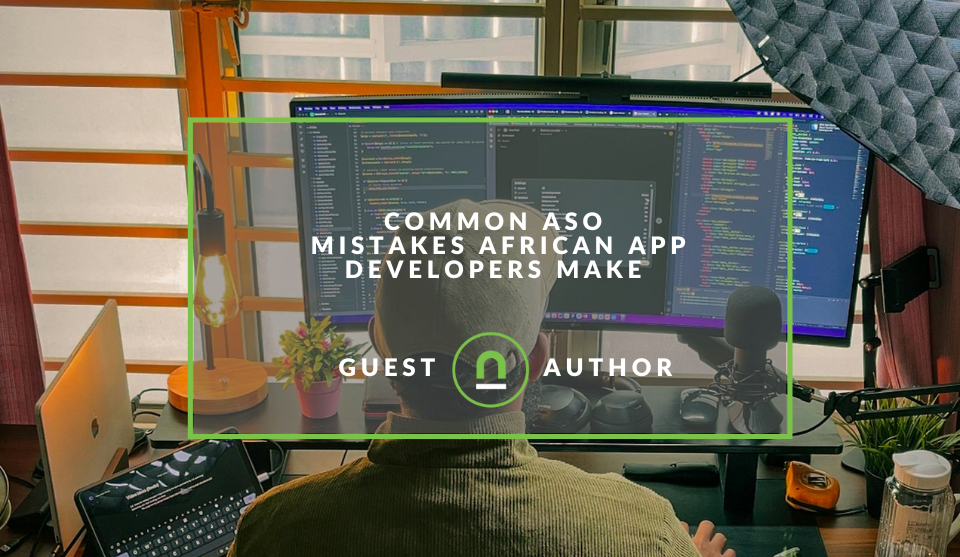Recent posts

Industry Experts
Common ASO Mistakes African App Developers Make
09 January 2026

Ace of Trades
The South African Industrial Tech Revolution
05 January 2026

nichemarket Advice
Why Video Production Companies Still Outshine AI
24 December 2025

Press Releases
Where You Can Find International Remote Jobs For South Africans
23 December 2025
Popular posts
Extravaganza
Trending Music Hashtags To Get Your Posts Noticed
24 August 2018
Geek Chic
How To Fix iPhone/iPad Only Charging In Certain Positions
05 July 2020
Extravaganza
Trending Wedding Hashtags To Get Your Posts Noticed
18 September 2018
Money Talks
How To Find Coupons & Vouchers Online In South Africa
28 March 2019
10 Social Media Ideas For Small Businesses
03 February 2017 | 0 comments | Posted by Che Kohler in nichemarket Advice
Social media has opened up a brand new avenue for businesses to speak to a large number of customers in an instant. Social networks can be a great tool for brand reach, traffic numbers and finally sales but as customers become more
This tactic may work, especially when used in conjunction with incentives but is not sustainable and will be less effective over time. If you want to be more strategic about using social media without throwing money at the problem and you're happy with the slow and steady approach then these 10 tips are just for you.
1. Focus on 1 - 2 social media plaforms
Pick 1 or 2 social media platforms to start off with, the ones you think will give you the best returns, this could be a combination of Facebook and Twitter or Facebook and Instagram, or even Facebook and LinkedIn. Take the time to get used to using the platforms, building your audience, testing out what kinds of content
2. Create a business page on Facebook
Creating a Facebook business page is a no brainer in the modern world. Apart from Google, Facebook is one of the most popular websites on the planet and gets millions of visits to its site every day. Having a presence on Facebook cannot be stressed enough. Creating a business page not only opens up a place for users to find and interact with your businesses but you can do all sorts of nifty things like capture email addresses for your mailing list and even create an eCommerce store inside Facebook.
3. List your businesses as your workplace
Once you've created your Facebook and LinkedIn business pages add it to your personal profile as your place of work. If you have any employees you can encourage them to do the same, this helps build up referral links to your social media page and later driving them to your website. It can also help you reach customers in your or your employee's friendships circle. Knowing someone who works for a service provider tends to encourage a bias and helps put a customer's mind slightly at ease before approaching you.
4. Join Facebook, Linkedin and Goolge+ groups
All 3 of these networks offer a grouping element. Where users create groups based on certain industries and interests. Your first task will be to find the groups that apply to your products, services, and content offerings. Once you've identified, followed or been granted access to post into these groups, use access to them wisely and respect group rules and above all do not spam.
If you have content posted on your social media profile you feel would be relevant to a certain group, feel free to reshare it into these groups and get fresh eyes on your content, attract new followers to your page and grow the reach of your content without spending a cent.
5. Promote other peoples content
Creating and curating your own content can be exhausting and a time-consuming process. Always coming up with fresh ideas, new images and content for users to engage with is no small task. For small businesses, its might not be worthwhile. Sharing and promoting other users quality content and tagging them in it can get you noticed by followers of other brands, or the brand itself. Exposing your social media profile to new eyes, keeping your newsfeed fresh and happening so it's constantly attracting users and may lead to some partnerships with these brands over time as they return the favour.
6. Look for questions directed at your industry
Now that you have access to groups and hopefully been following brands and personal profiles of industry leaders your newsfeed will be filled with content and questions relevant to your line of work or set of expertise. When browsing your news feed be on the look out for questions or debates that you feel you can contribute to, you may do so with a comment or engage them with a link to an article you like or even better created on the topic.
The more you engage with communities and showcase your knowledge, the more people will value your input and follow you for more insights. Comment marketing is slowly starting to gain traction and his been used for years by many an SEO, social media has just made it more accessible and taken it to a new level.
7. Create niche Pinterest boards
Pinterest is a really unique social media platform with a distinct audience. Users don't normally engage with the content immediately but rather curate things that catch their attention to engaging with it at a later stage. It also has a really intuitive recommendations engine so finding and browsing for similar content is very simple for the user. To make the most out of this user behaviour, I would recommend doing some of the hard work for the user. Creating niche boards in conjunction with generic boards where content can overlap.
Reason one it takes less effort to fill up boards with content and 2 it allows users to jump from board to board without leaving your profile to find relevant content. The great thing about creating niche boards are they may be exactly what a user has been wanting to curate for themselves so instead of scrolling through posts for hours they simply use your board as their personal board. Once you have captured these regular visitors they're normally very active in sharing your posts with friends and interacting with your content. Which is essentially what all social media platforms are about, building an active community around your brand.
8. Create infographics
Creating infographics is a great way to condense content and give users insight into complex topics at the blink of an eye. As social media users attention spans become shorter, they become more susceptible to content that provides instant gratification. Which is why infographics have become so popular and why it has such viral sharing potential. Because of its popularity creating infographics can reach a wider audience and while this is great for brand building, you can still use this as a traffic driver. By hosting a more detailed breakdown of the infographic on your site with insights you can leverage the infographic traffic and drive some of it to your site.
Protip! If you need ideas on creating content for your social media channels check out our 10 content ideas for small businesses.
9. Vary your # tags
Hashtagging is social media's way of allowing you to categorize your posts under certain topics. It's up to you to research and see which hashtags are more popular or the most active at any time. Hashtagging your posts allow it to fall under these content streams where interested users can easily find and engage with the content, many times months after the post was originally created, improving the longevity of content on social media.
10. Track all your links
Tracking all the content you drive via social channels is a vital last step in the process. It will help you attribute which social networks are driving the most traffic and sales and what content was the most successful. What kind of consumers you are targeting and which consumers you should be targeting more of and how often you need to speak to them. All this information can be used to optimise your content, your campaigns, and improve how you use the previous 9 tips in the article.
Socialise with your clients
Now that you know how to create a winning social media strategy without having to spend a cent, what will be the first task you take on? Let us know in the comments section below.
Contact us
If you want to know more about social media marketing don’t be shy we’re happy to assist. Simply contact us here
Tags: facebook, instagram, Social Media
You might also like
The South African VAT Threshold Chokehold
05 December 2025
Posted by Che Kohler in nichemarket Advice
How South Africa's R1 Million Limit Keeps Small Businesses From Developing, And Why Even Adjusting For Inflation Alone Would Free Up Burdens On Small...
Read moreWhy Cross-Border Payments Are Slow, Tedious, and Expensive
17 December 2025
Posted by Che Kohler in Money Talks
While we have modernised many industries, surprisingly, digital payments are struggling to keep up, and the old way of transferring funds online has ...
Read more{{comment.sUserName}}
{{comment.iDayLastEdit}} day ago
{{comment.iDayLastEdit}} days ago
 {{blogcategory.sCategoryName}}
{{blogcategory.sCategoryName}}


